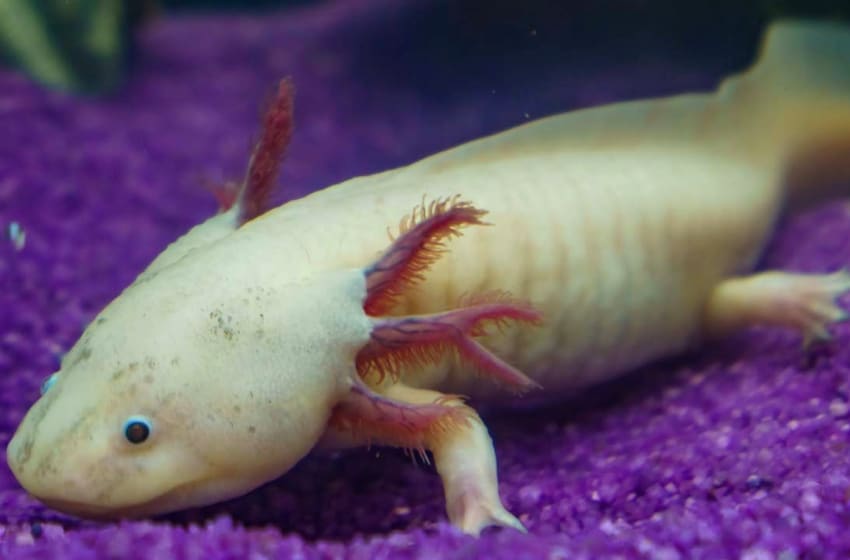Rescuing Axolotls in Mexico: Meet Jesús Correa Rangel

The axolotl (ambystoma mexicanum) is a fascinating and mysterious animal native to Mexico City’s once plentiful waterways. Today, this salamander still inhabits the canals of Xochimilco, and the residents of this area are actively involved in its conservation efforts.
One of them is Jesús Correa Rangel, who plays a crucial role in preserving axolotls. His house serves as a breeding center for these unique creatures and attracts numerous tourists who explore the canals of Xochimilco.
Jesús follows a dedicated routine to ensure the well-being of the axolotls under his care. He starts his day early, around 7 a.m., and opens the doors of the axolotl center for any visiting tourists. He meticulously monitors the temperature, filtration, and lighting of the tanks where the axolotls reside.
Maintaining optimal water quality is of utmost importance, and Jesús regularly measures various parameters such as pH, hardness, nitrites, nitrates, ammonium, CO2, oxygen, and chlorine. Additionally, he conducts physical checks on the axolotls to ensure their health and wellness.
Jesús’s efforts are part of a larger conservation initiative aimed at preserving the axolotl population. Organizations like the World Wildlife Fund (WWF) classify these unique creatures as endangered species. Their decline can be attributed to various factors, including habitat degradation, pollution, overfishing, the introduction of non-native predators, and the pet trade.
Fortunately, the axolotls have thrived in captivity due to their incredible adaptability. This has allowed for successful conservation efforts in places like Xochimilco.
Living with axolotls, the story of Jesús Correa Rangel
Jesús Correa Rangel has dedicated his life to the care and conservation of axolotls. His family opened the Ajolotario Apantli in Xochimilco, a center dedicated to breeding, studying, and preserving the axolotl. Jesús plays a crucial role in the center and is actively involved in efforts to save the salamanders from extinction.
The Ajolotario Apantli has been working tirelessly for 36 years, helmed by Jesús during the last 18. The project was established to protect the endemic flora and fauna of Xochimilco and the Ajolotario Apantli can reproduce and grow up to 1,000 axolotls per year.
“This project was born to protect Xochimilco’s endemic flora and fauna. For our family, it was a way to preserve our ecosystem and keep our identity and way of life next to the canals of Xochimilco,” Jesús told Mexico News Daily.

Just 20 years ago, the extent of the danger to the axolotl population of Xochimilco was unknown. However, today efforts to save this species come from both academic and civil initiatives. The Ajolotario Apantli and the “Adopt an Axolotl” campaign led by UNAM are examples of these conservation efforts.
“Part of the conservation process is that when the axolotls are big enough, we take them to a secret canal in Xochimilco where they are released away from pollution and fishermen,” Jesús explains.
Other conservation initiatives in Xochimilco
There are also other initiatives for the conservation of the axolotl in Xochimilco. UNAM, Mexico’s largest public university, has launched the “Adopt an Axolotl ” campaign to promote conservation efforts in the area. Additionally, other ajolotarios, such as Ajolotario Tlazocamati Tonantzin, PIMVS Ajolotario, Ajolotario UMA Atlicuilco, and Ajolotario Xochimilco, play their part in the conservation of the axolotl. Many of the workers in these ajolotarios are also involved in the cultivation of food in the chinampas, a traditional farming system in the area.
Involving the local community in the conservation efforts for the axolotl in Xochimilco is essential. People here have a unique connection to the ecosystem and can play a crucial role in its preservation. Raising awareness, promoting sustainable practices, and involving the community in conservation initiatives increase the chances of successfully protecting the axolotl and its habitat. This collective effort can help ensure the long-term survival of this fascinating species.
Ana Paula de la Torre is a Mexican journalist and collaborator of various media such as Milenio, Animal Político, Vice, Newsweek en Español, Televisa and Mexico News Daily.
Source: Mexico News Daily

